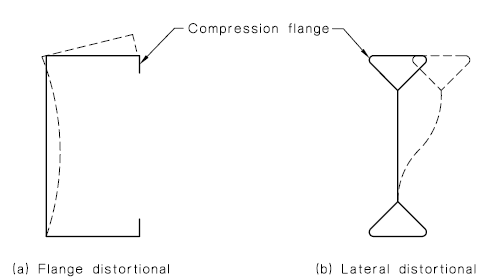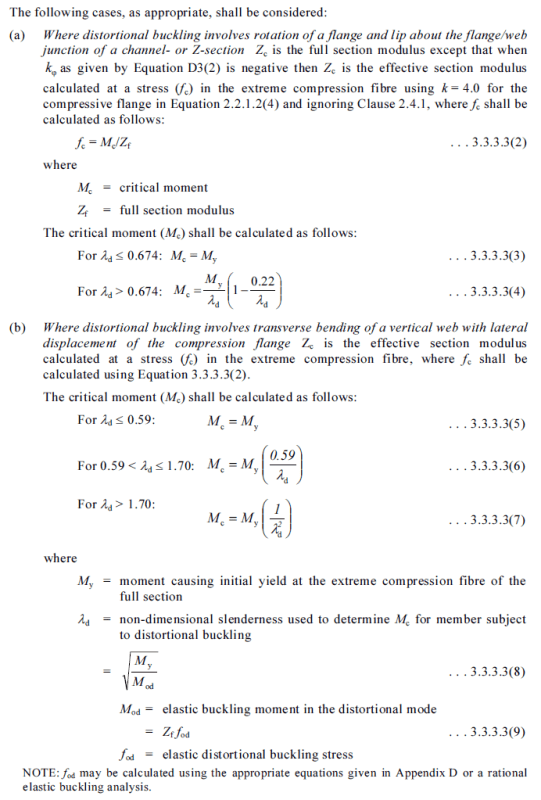Hi everyone,
According to the AS4600 commentary, lateral-distortional buckling is more likely to occur in beams such as a hollow flange beams which have stiff flanges. ("The high torsional rigidity of the tubular compression flange prevents it from twisting during lateral displacement").
If when designing cold form lipped cee channel rafters I do the lateral-distortional buckling check, then the capacity is reduced by sometimes up to 30%. The results will also disagree with several of my structural design computer programs.
If I ignore the lateral-distortional buckling check and only check flange-distortional buckling, then the calculation returns the expected capacity, and agrees with my structural design programs.
Should I be skipping the lateral-distortional buckling check in these situations? And if so, why?
Thanks anyone in advance for your help.
According to the AS4600 commentary, lateral-distortional buckling is more likely to occur in beams such as a hollow flange beams which have stiff flanges. ("The high torsional rigidity of the tubular compression flange prevents it from twisting during lateral displacement").
If when designing cold form lipped cee channel rafters I do the lateral-distortional buckling check, then the capacity is reduced by sometimes up to 30%. The results will also disagree with several of my structural design computer programs.
If I ignore the lateral-distortional buckling check and only check flange-distortional buckling, then the calculation returns the expected capacity, and agrees with my structural design programs.
Should I be skipping the lateral-distortional buckling check in these situations? And if so, why?
Thanks anyone in advance for your help.


